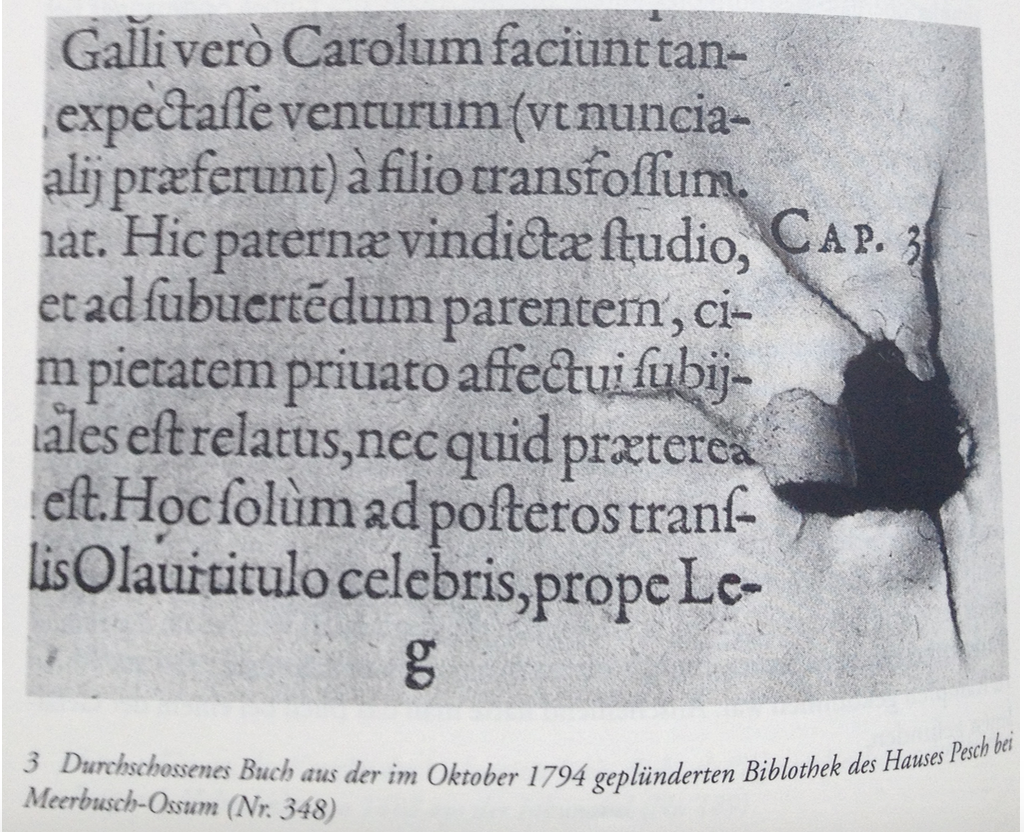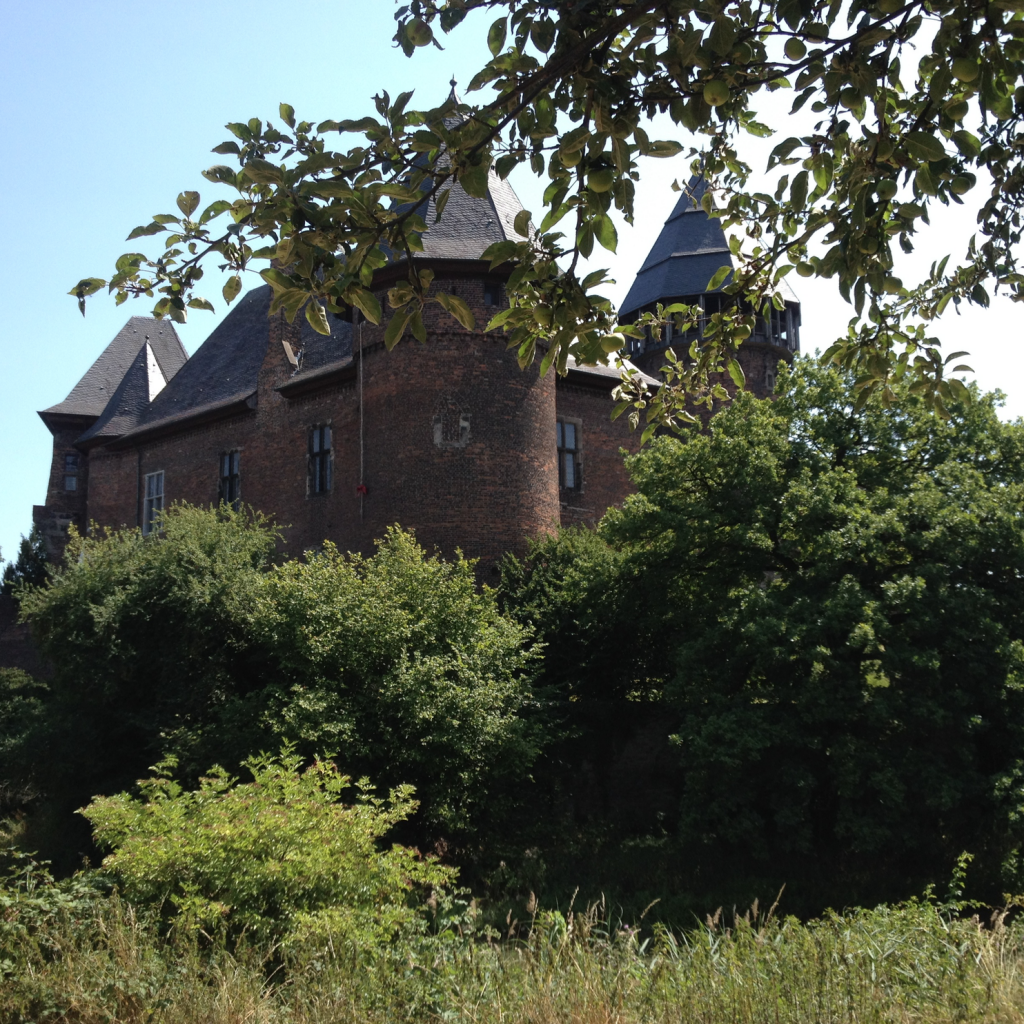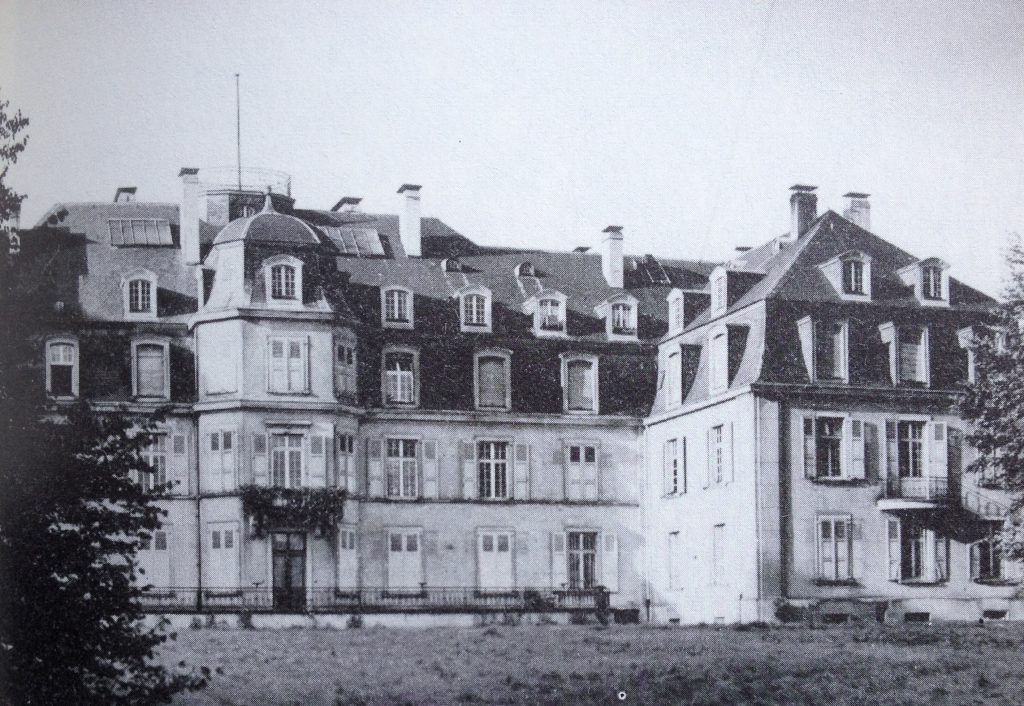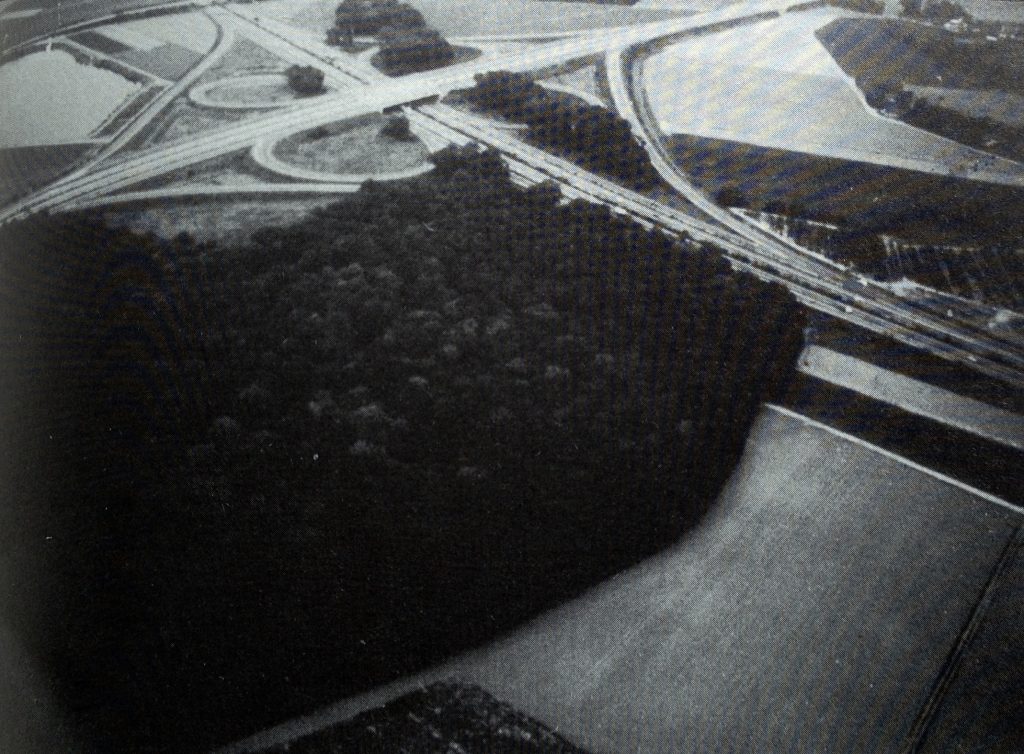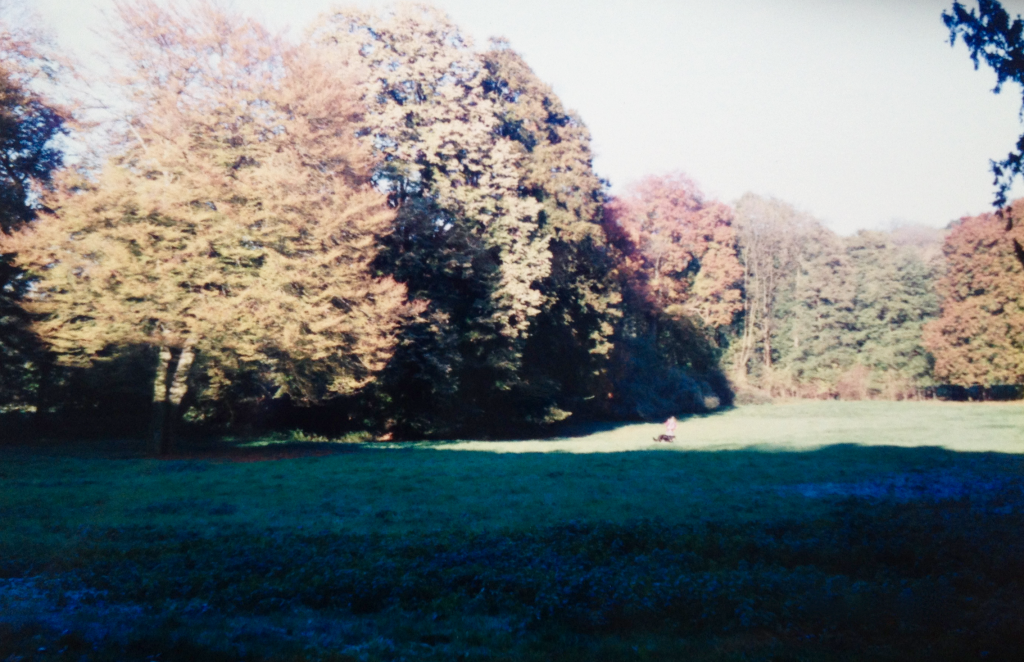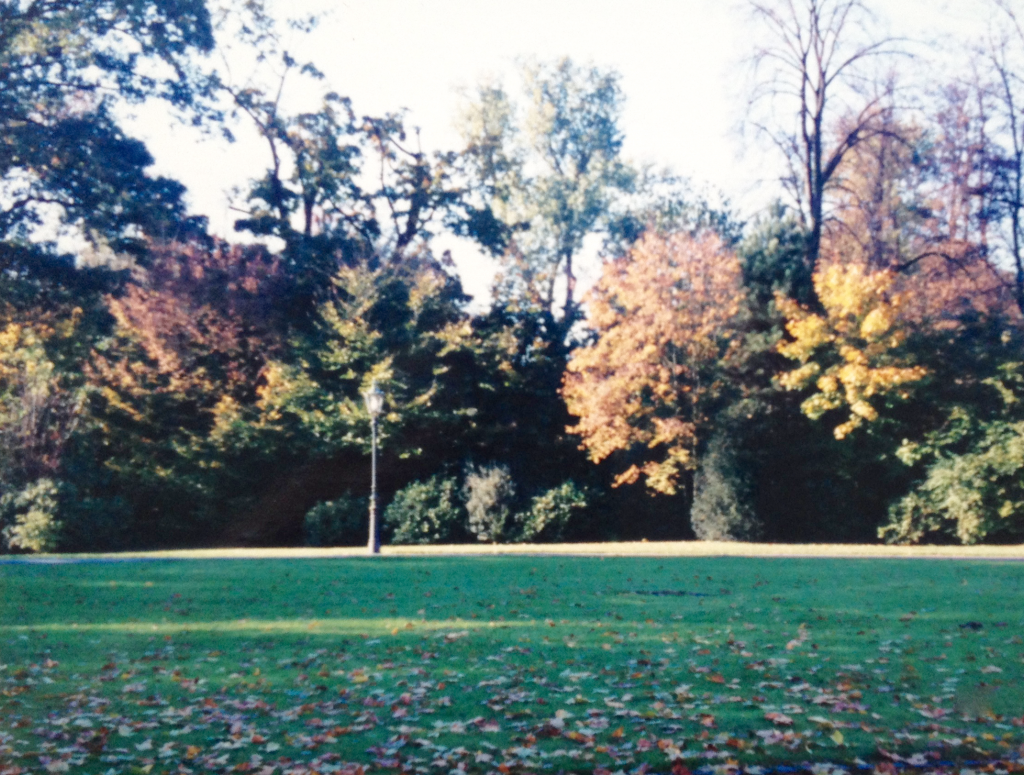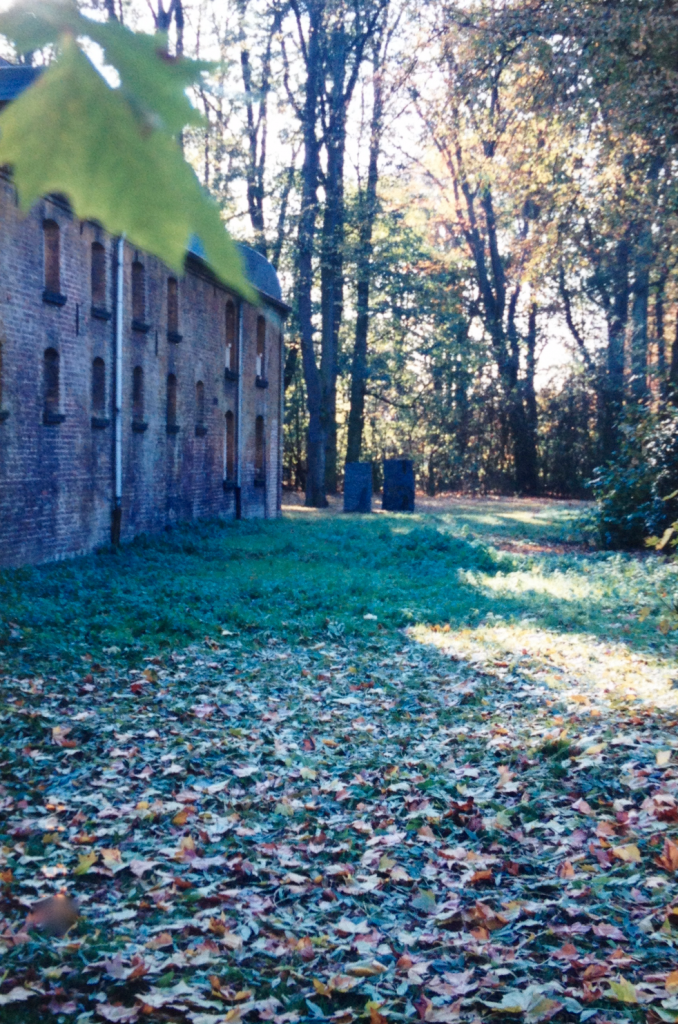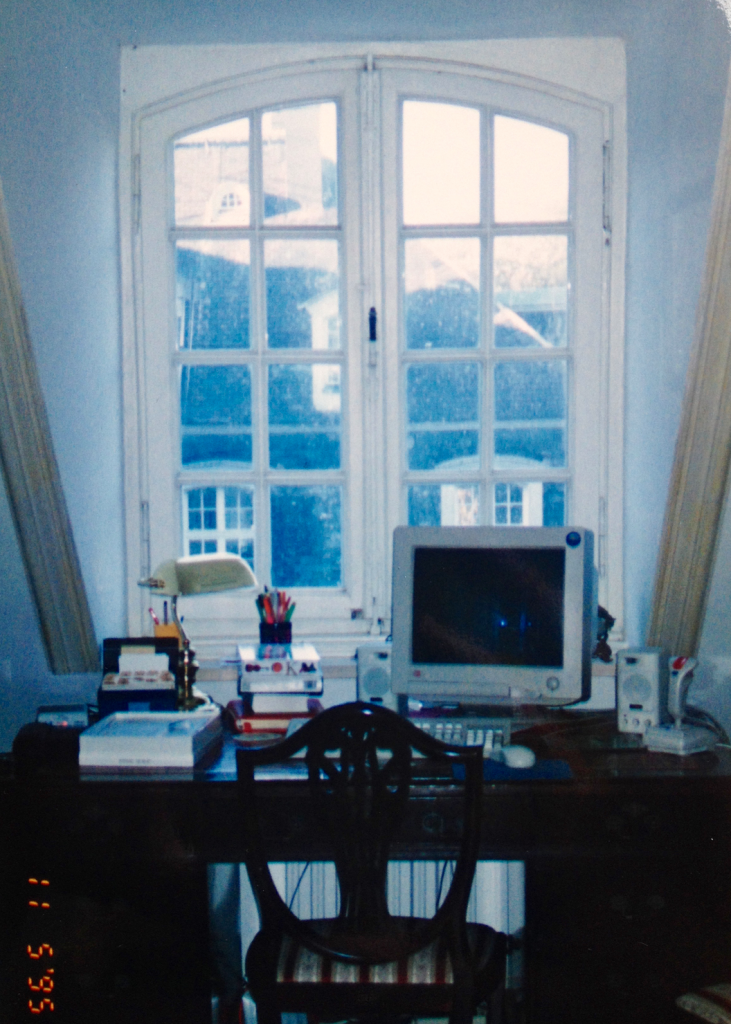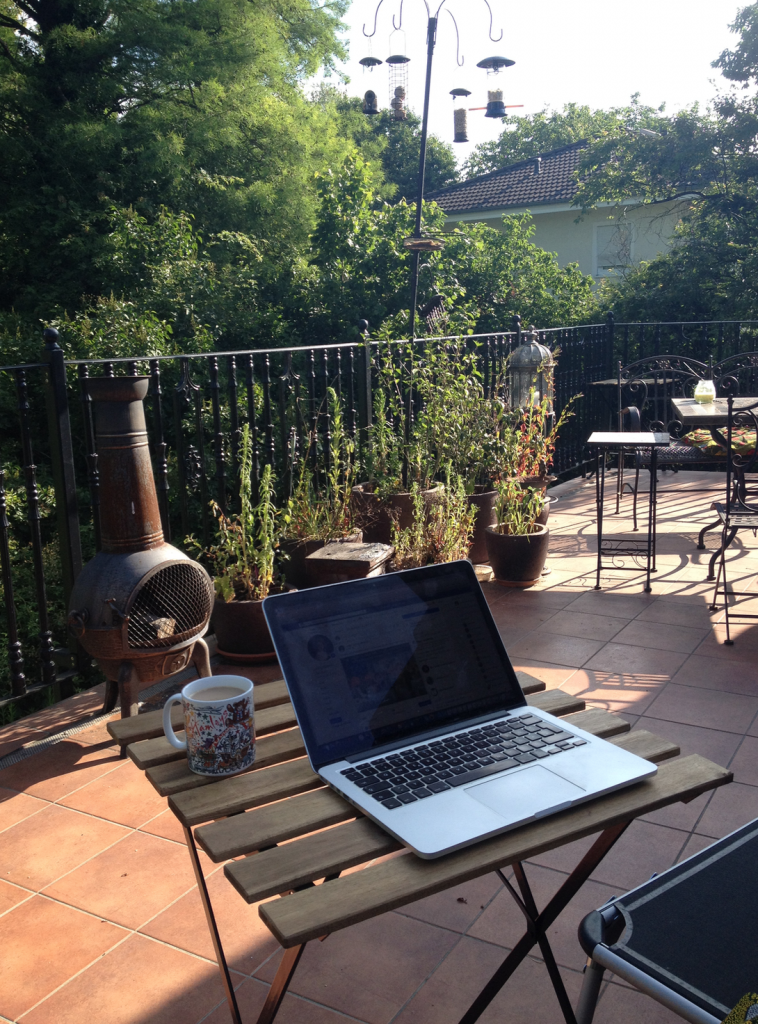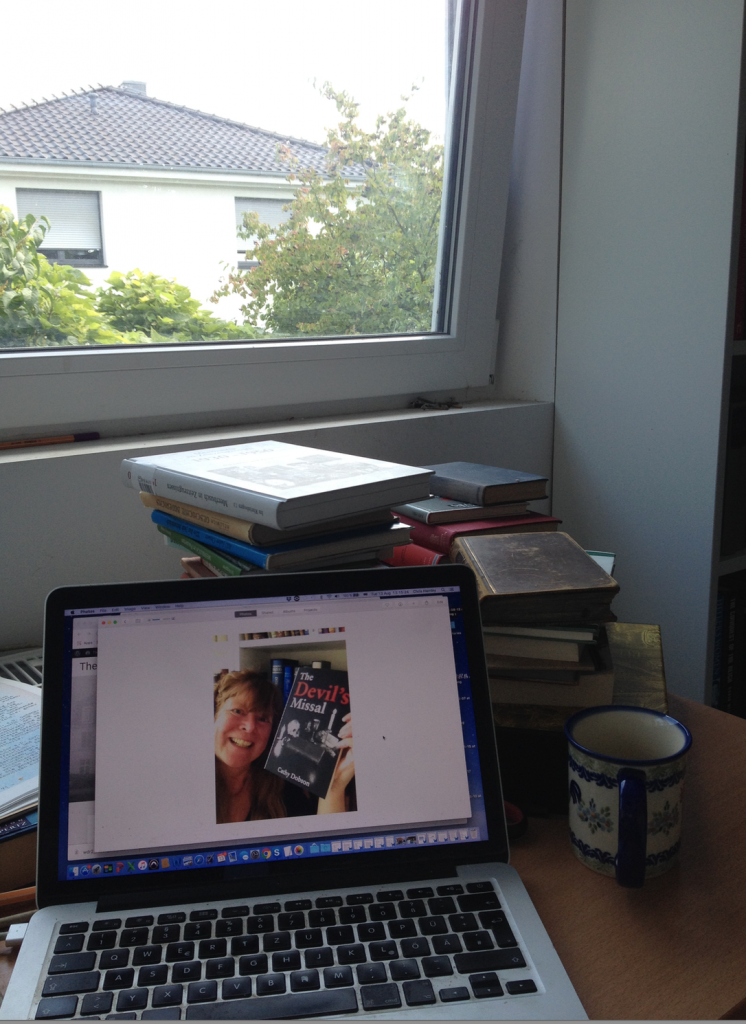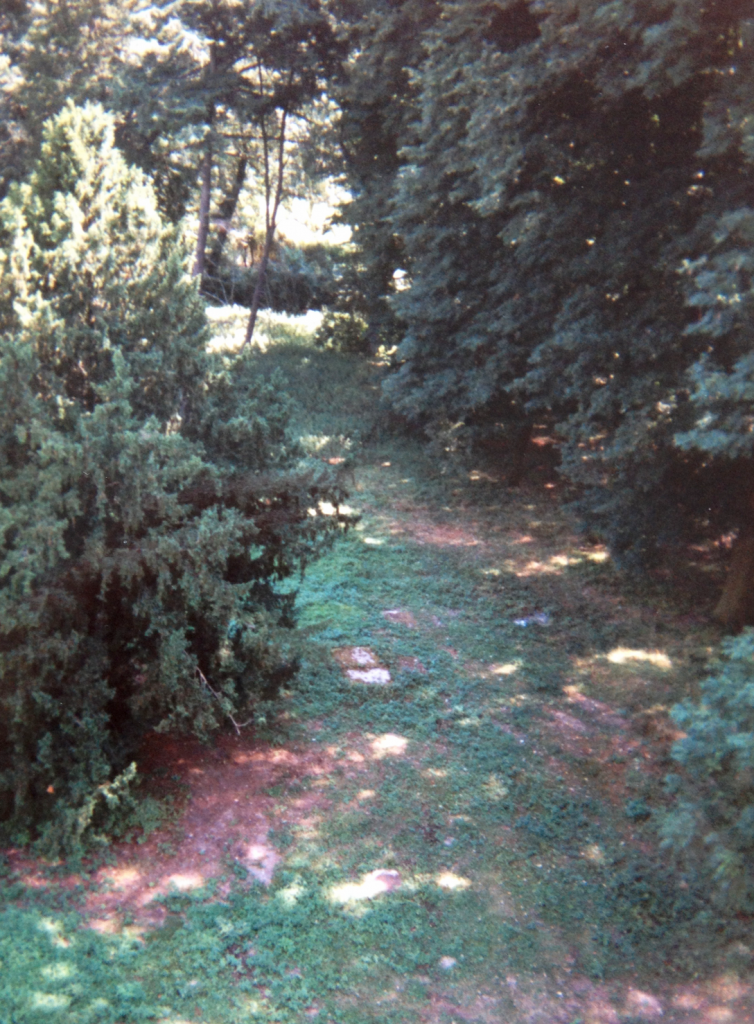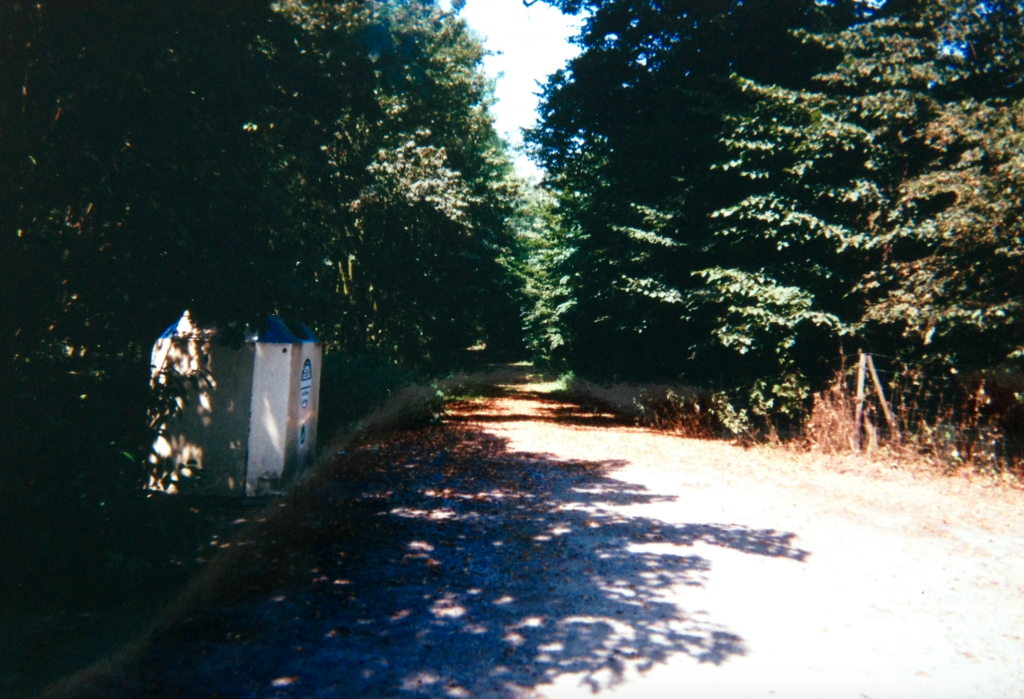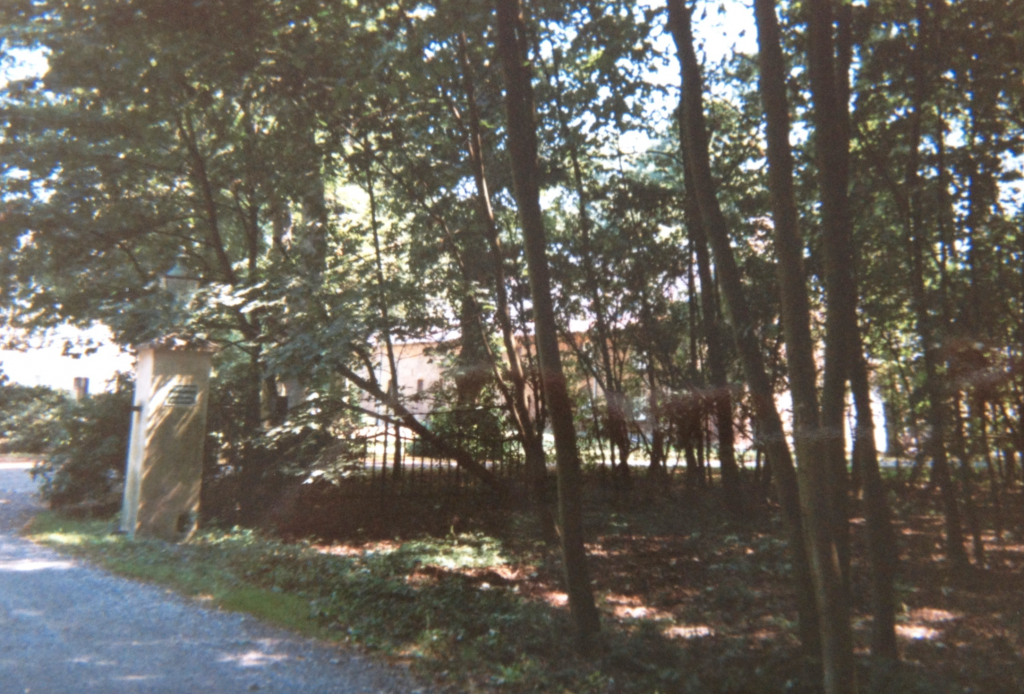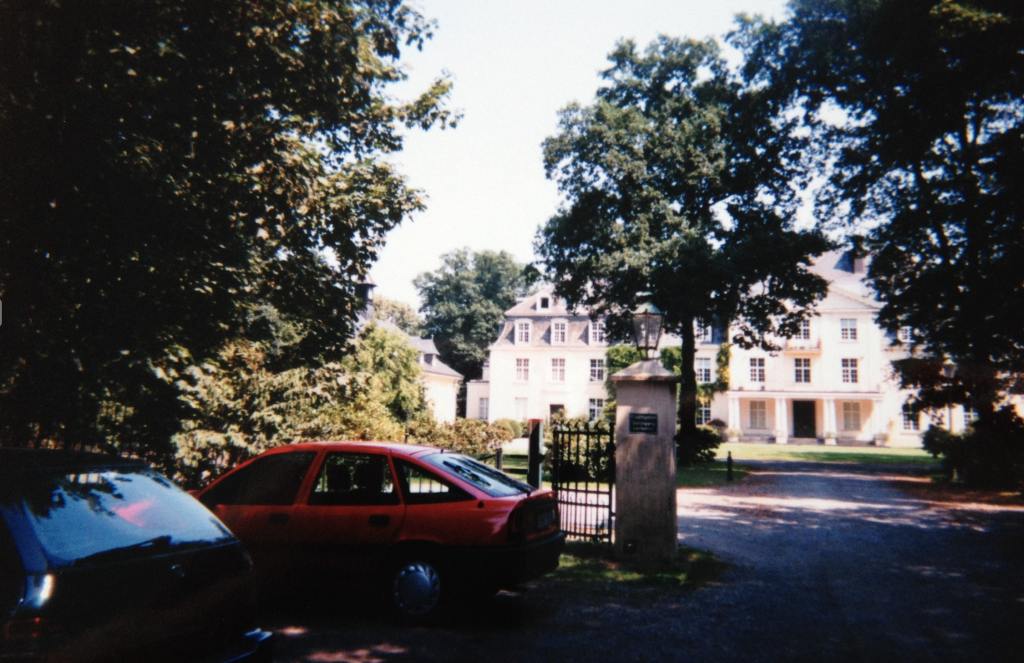Including so many of the locations from The Devil’s Missal and The Devil’s Progeny.
Schloss Pesch
The one problem with Schloss Pesch….
Schloss Pesch is really easy to get to by car. It is only a stone’s throw from the Geismühle service station on the A57, and right next to the Meerbusch intersection with the A44.
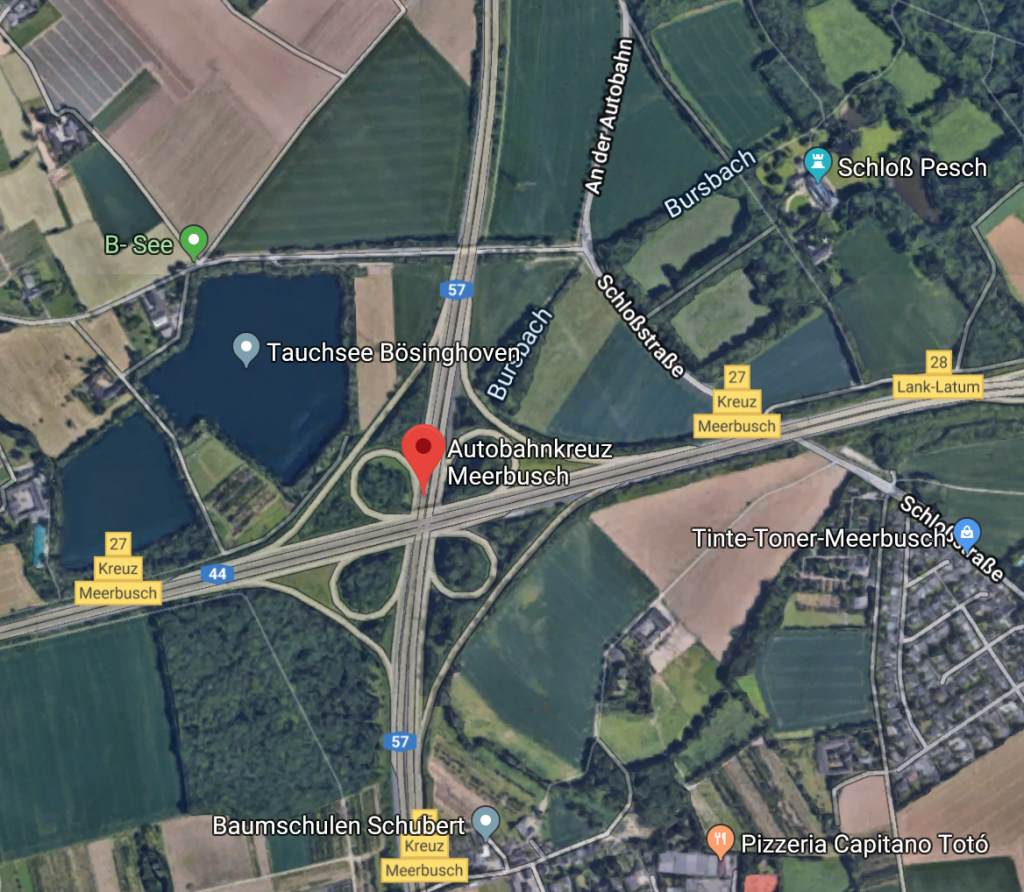
Of course being this close to a busy motorway junction is both a blessing and a curse. Great for those who wish to make a quick getaway… a source of perpetual background noise and pollution for those who live there.
Perhaps it’s time to reforest the land between the schloss and the road.
Autumn leaves at Schloß Pesch
A rummage through the archives threw up this beautiful old picture of the right hand wing of Schloss Pesch, just as the leaves were turning.
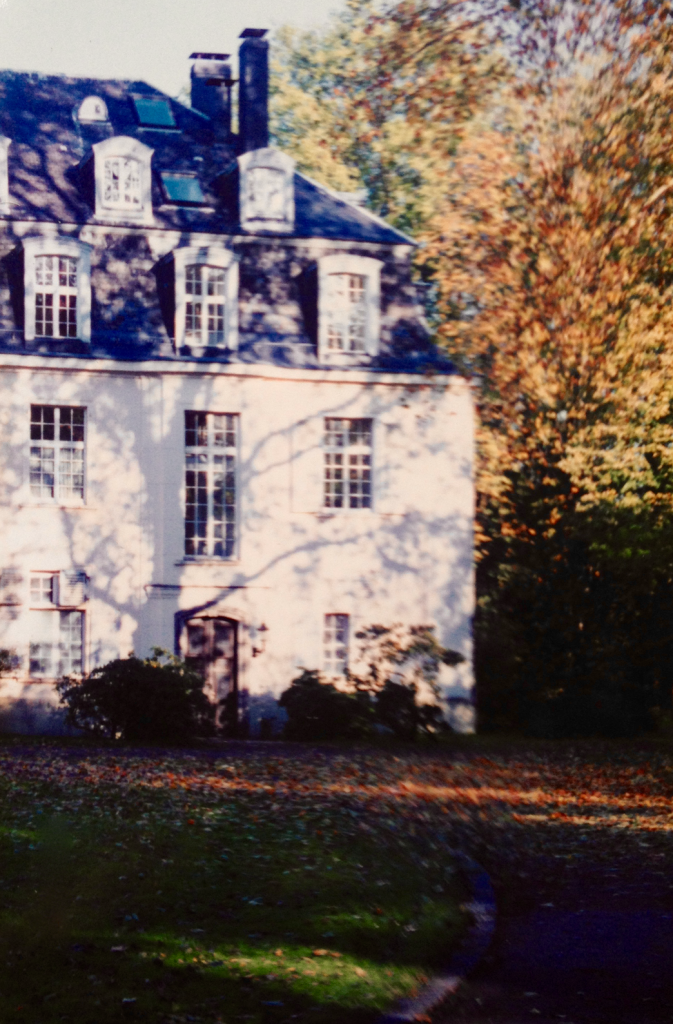
View towards Schloßstraße from Schloß Pesch
This photograph was taken before the installation of modern gates. The driveway used to be a network of muddy puddles of varying depths. It wasn’t too bad negotiating it in a car, but on a bicycle in the dark it was only for the hardened adventurer….
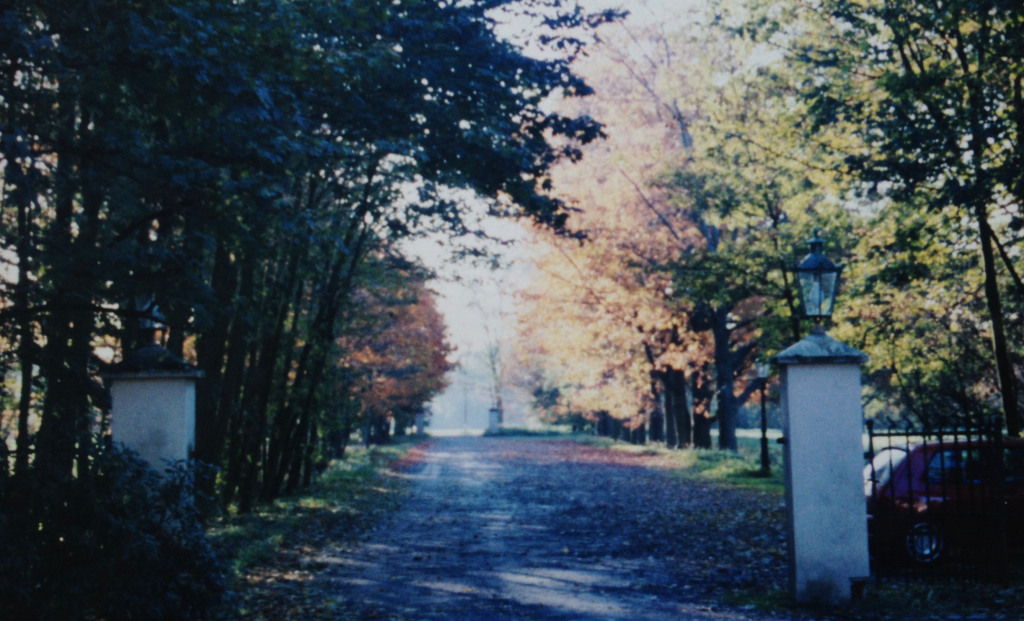
Autumn at Schloss Pesch
Autumn is the most beautiful season around Schloß Pesch as the woods which surround it turn golden and russet. If you haven’t taken yourself on a tour of all the breathtaking Meerbusch locations from The Devil’s Missal yet, the next few weeks would be the perfect time. These are older photos… the leaves have not turned yet.
Remember when they cleared the weeds at Schloß Pesch?
In the early 1990s the grounds of Schloß Pesch were still hugely overgrown and the ‘lawn’ was a mass of weeds and nettles. During the late 90s a gardening contractor was brought in to clear the weeds and plant a proper lawn. This is what it looked like after it had been newly ploughed, rolled and seeded.
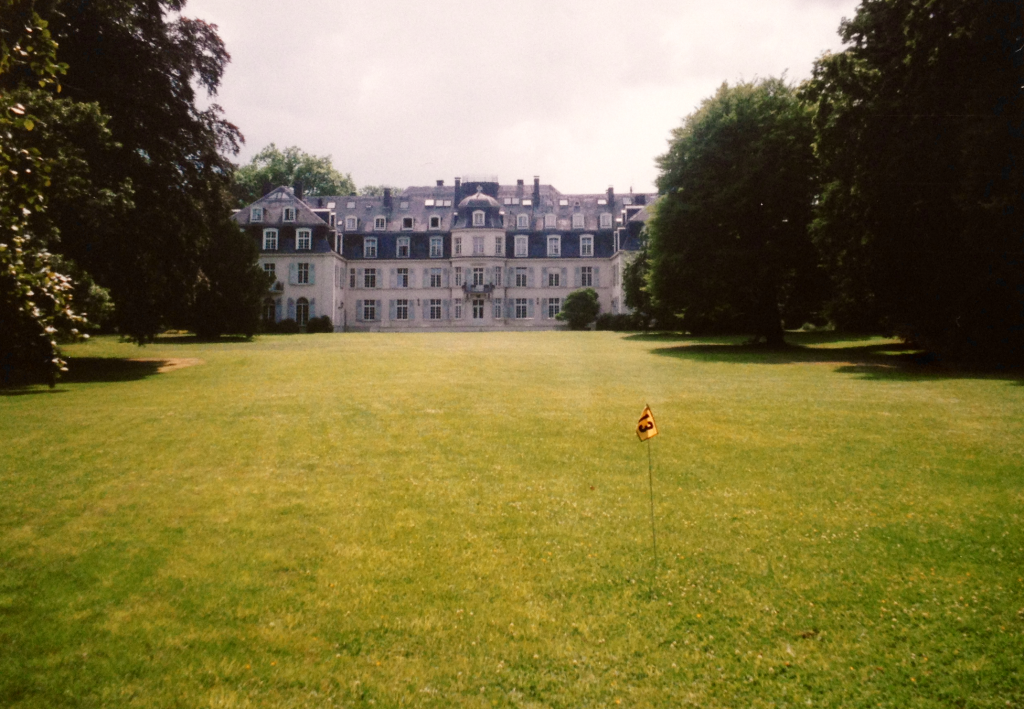
Schloß Pesch chapel
I couldn’t resist picking up this 2000 copy of the Meerbuscher Geschichtsheft with this historic picture of the chapel at Schloss Pesch, prior to its renovation. This is how I remember the chapel, with bushes growing out of its brickwork and windows missing and others bricked or boarded up. Particularly at night it seemed like the obvious setting for a ghost story.
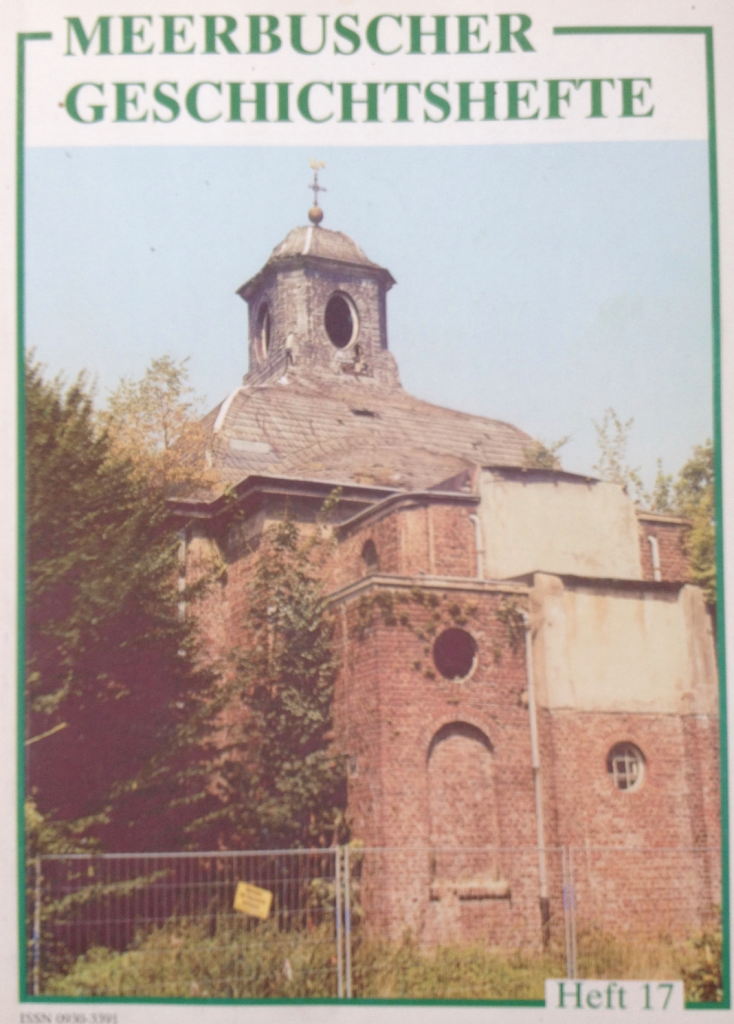
I was particularly pleased to find a plan of the interior drawn by the architect who was planning the renovation. The body of the chapel back then was one single circular room. At the time there was no remnant of an altar, but it would likely have been on the right hand side of this drawing (which is to the east) as the door was then on the left (west) side.
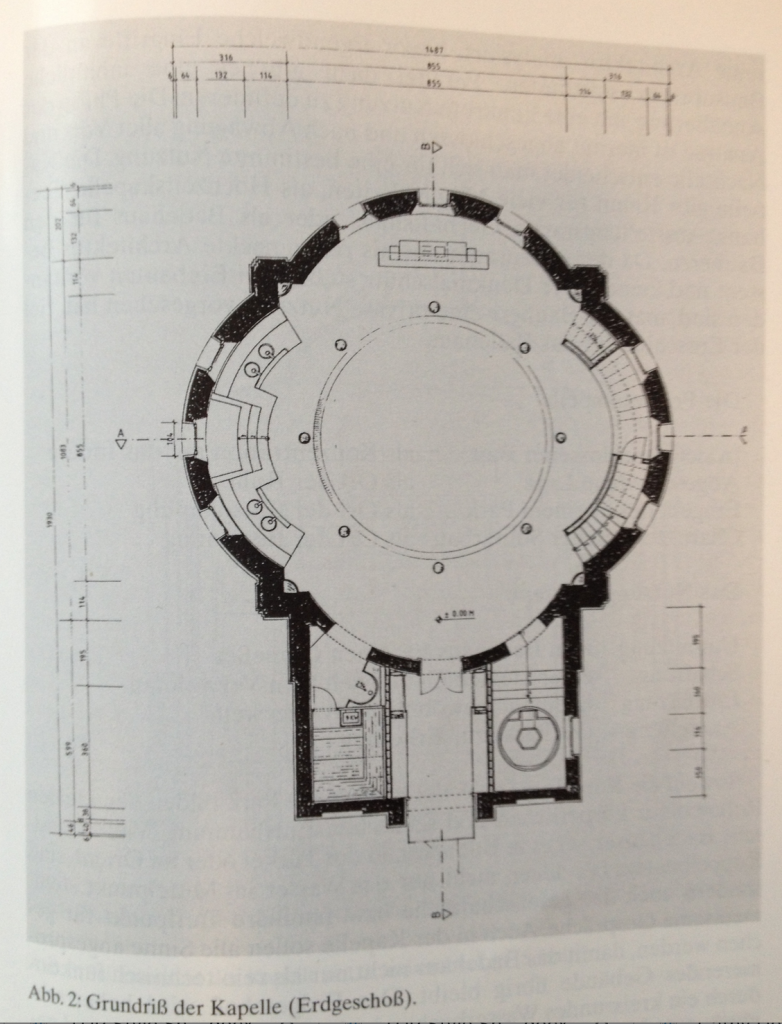
Where do I write?
One of the questions readers frequently ask is where do I write. Physically that is. Which seat is my backside attached to? What can I see from if I look up from the screen?

Writing at Schloß Pesch 
Writing when it’s fine 
Writing on wet days
The answer is usually wherever I happen to be at the time. But if the weather allows it, outdoors. Here are three images of some of my favourite writing locations. The first is at Schloß Pesch in Meerbusch Ossum. The other two are in Meerbusch Büderich.
The woods around Schloß Pesch
Part of the attraction for using the setting of Schloss Pesch for a ghost story lies in the surrounding woods. In The Devil’s Missal, the sinister atmosphere of the surrounding woods can be felt even on a bright sunny day. There are multiple paths leading off into the trees which disappear into dark undergrowth. It feels as though eyes are watching you from within the darkness.

The plundered library of Schloß Pesch
Earlier today I visited the archaeological museum at Burg Linn. The archaeological items are housed in a converted WW2 bunker next to the castle. On the third floor, hidden away behind an iron grille is a tiny, beautiful and very evocative library.
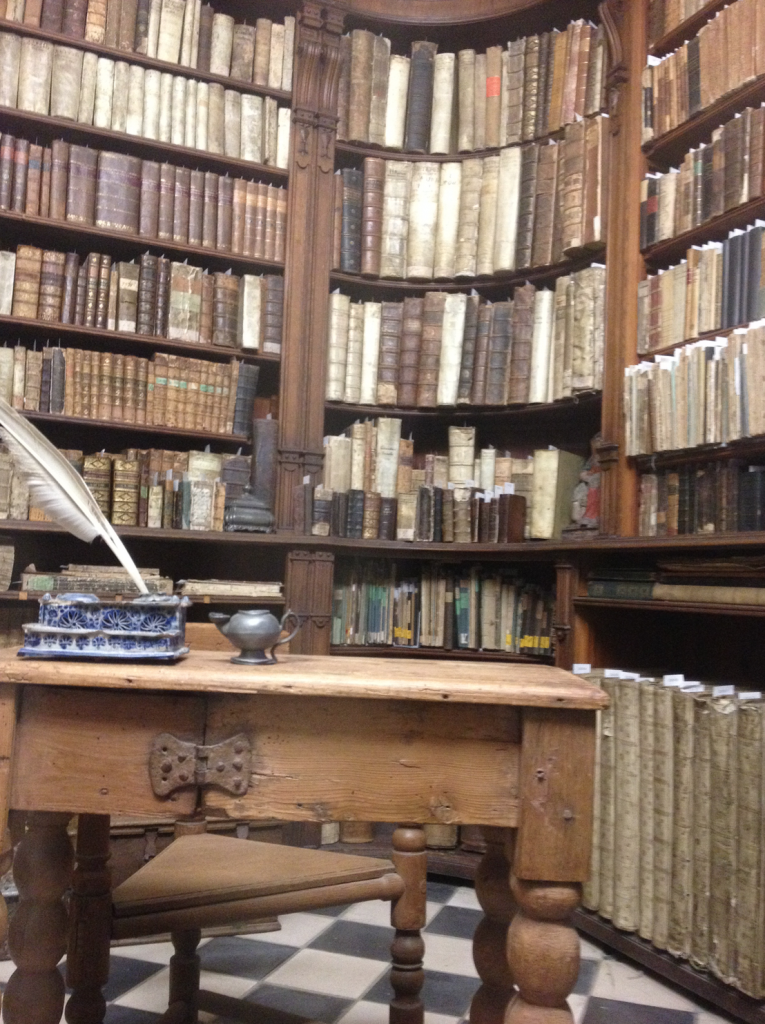
Technically it isn’t actually a library. It is a collection of old books, mostly dating from the 16th and 17th centuries, brought together in the 1930s. Two books in the collection were of particular interest because of their connection with Meerbusch-Ossum and Schloß Pesch.
The first (No. 354) contains a handwritten note inside the cover: ‘Following the ransacking of the library at Schloß Pesch on 7th October 1794, which was ordered by the Prince and carried out by the inhabitants of Linn and Ürdingen, a total of 9860 rare volumes were stolen, to which the poor state of this book bears testimony.’ Indeed, this statement is underlined by the very obvious rodent damage to the book in question.
The second book (No. 348) (printed in 1583 in Frankfurt) has two bullet holes in it. Again there are inscriptions on the inside cover explaining the origins of this damage. The first, in French, declares a revolutionary (citroyen Republiquain) to be the new owner – presumably plundered during the Franco-Prussian war. The second, in Latin, by a pastor of Lank, in whose parish Schloß Pesch is situated, stating that the book had been given to him, with the bullet holes already in it, by a citizen of Latum following fighting in late October 1794 on the Rhine. Apparently the book had been found about the person of a dead soldier.
